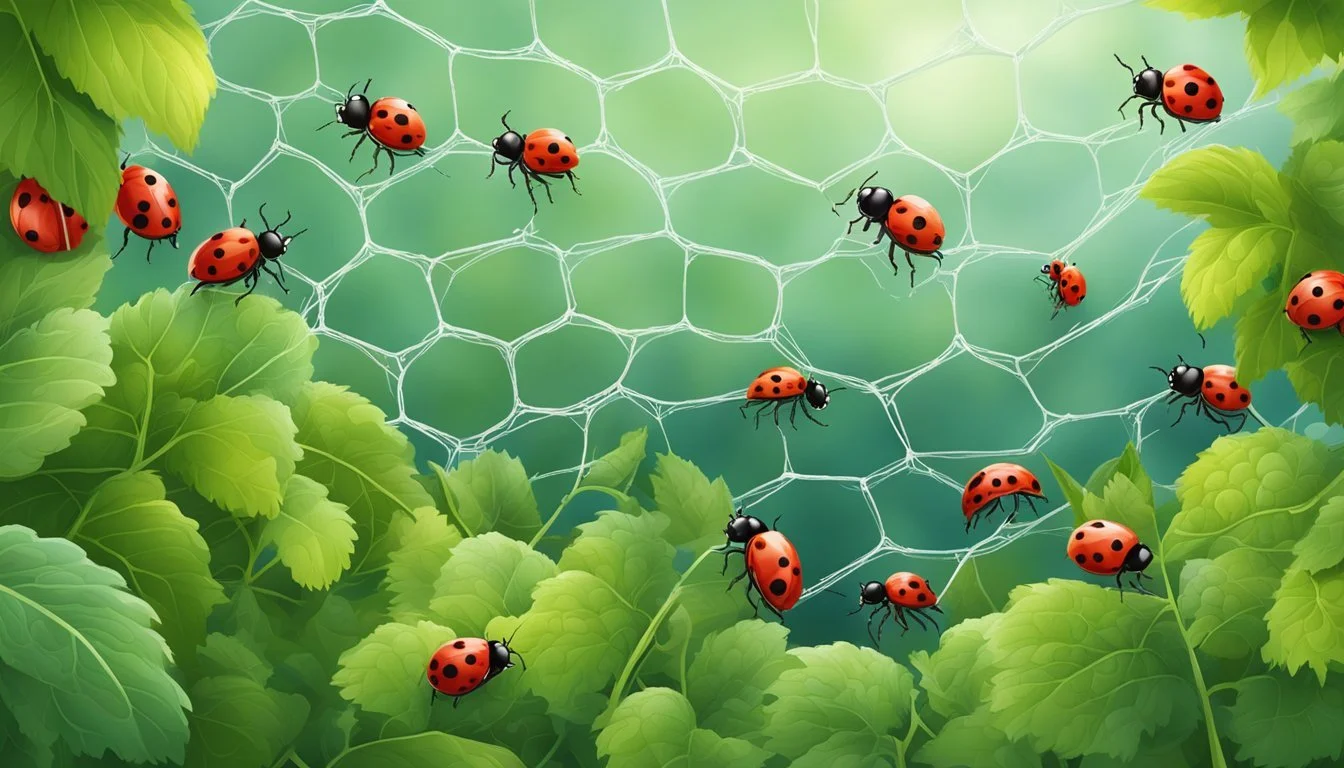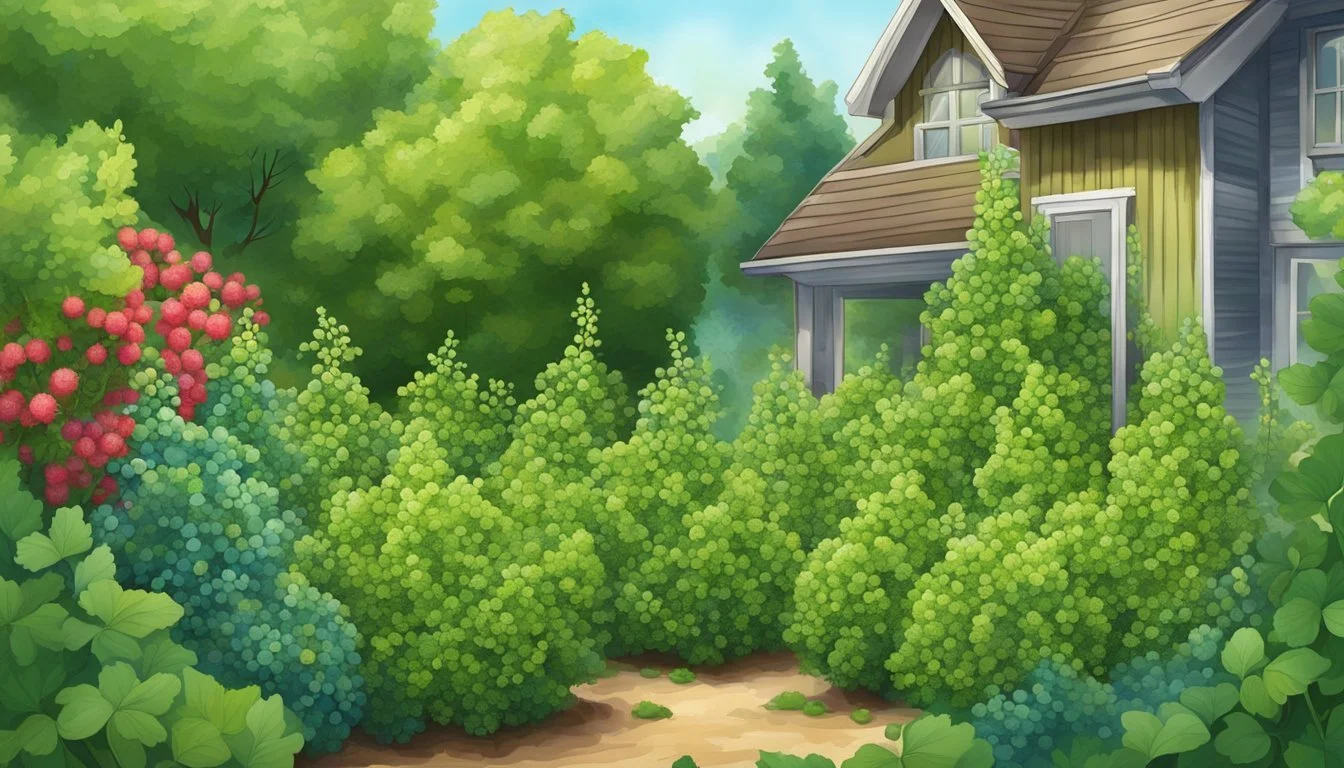Pest Control for Currant Bushes
Effective Strategies for Healthy Crops
Currant bushes, encompassing black, red, and white varieties, are cherished by gardeners for their tart berries that are perfect for jams, jellies, and pies. However, these same attractive qualities that make currants a favored choice among fruit growers also render them susceptible to a range of pests. Effective pest control is crucial to ensure the vitality of currant bushes and the quality of their fruit.
Gardeners must be vigilant in identifying and addressing common pests such as the currant fruit fly, which can cause significant damage to the crop. For instance, black currants, renowned for their deep flavor, can be particularly affected by aphids and other pests that target new growth and fruit. Careful attention to cultural practices, like proper spacing for airflow and sanitation to remove fallen fruit, plays a vital role in pest management. Moreover, implementing organic control methods can help maintain a healthy currant bush while preserving the environment.
Understanding the life cycle of pests and employing timely interventions is key to safeguarding currant bushes. Selecting resistant varieties and ensuring optimal growing conditions can greatly reduce the impact of pests. Regular monitoring, combined with appropriate control measures, can result in the successful cultivation of lush currant bushes with bountiful harvests of black, red, or white currants. To aid in this endeavor, resources like Laidback Gardener provide insights into natural pest management strategies that are both effective and environmentally sensitive.
The Basics of Currant Bushes
Currant bushes, belonging to the genus Ribes, play a vital role in both home and commercial agriculture. Offering a range of berries from black, red, to white currants, these plants are valued for their fruit production and unique flavors that enrich various culinary uses.
Understanding Currant Varieties
The genus Ribes includes various species such as black currant (Ribes nigrum), red currant (Ribes rubrum), and white currant, a variant of red currant. Black currants are known for their strong flavor and high vitamin C content, while red and white currants are appreciated for their tartness in jams and jellies.
Optimal Planting Conditions
For effective planting, currants require well-draining soil enriched with organic matter and consistent moisture. They thrive in full sun to partial shade, with climate preferences varying among species. Optimal growth conditions enhance the plant's robustness against pests and diseases.
Growth and Development
Currant bushes exhibit a bushy growth habit with multiple stems emerging from the base. They feature distinct lobed leaves and are adorned with small flowers that mature into flavorful fruits. For prime fruit production, pruning should encourage the development of strong new shoots each year.
Common Pests and Diseases
Currants are susceptible to several pests and diseases, including powdery mildew, rust, anthracnose, and botrytis. White pine blister rust is a notable disease, as it requires Ribes species as one of its hosts, leading to restrictions in some regions.
Resistant Currant Cultivars
Planting resistant cultivars is a proactive strategy to mitigate issues from common pests and diseases. Examples include 'Consort', 'Titania', 'Ben Sarek' for black currants, and 'Red Lake' for red currants. Choosing disease-resistant varieties can help ensure a healthy harvest.
Cultivation Techniques
Successful cultivation of currants relies on thorough soil preparation, careful planting, and diligent maintenance. These practices promote healthy growth, yielding a bountiful harvest of fruit for fresh consumption or for making juice and jellies.
Soil Preparation and Care
The foundation for vigorous currant bushes begins with proper soil preparation. Currants thrive in well-draining soil enriched with organic matter. Prior to planting, incorporate compost or aged manure to nourish the soil. Maintaining a 2-3 inch layer of mulch helps retain moisture, suppress weeds, and regulate soil temperature.
Planting and Spacing
Planting currant bushes correctly sets the stage for their growth. They should be planted in early spring or late fall, at a depth where the soil covers the roots completely but leaves the base of the stems exposed. Proper spacing is crucial, typically around 4-5 feet apart, to ensure adequate air circulation and room for growth, which minimizes disease risks and boosts fruit production.
Pruning and Maintenance
Regular pruning is an essential aspect of currant management. It facilitates healthy growth and increases fruit yield. In late winter, remove dead or damaged branches, and thin out old wood to encourage new growth. This also improves air flow through the leaves, which is vital for disease prevention.
Propagation Methods
Currants can be propagated using several methods; however, cuttings are the most common. Hardwood cuttings taken in late fall after the leaves have dropped can be rooted in pots or directly in the ground. This method ensures that the new plants will be true to the parent variety and maintain the same fruit quality.
Harvesting and Utilization
The harvest season for currants is when the fruit is firm and fully ripe, providing the best flavor for fresh eating, juice, and jellies. Hand-picking is the preferred method, as it safeguards the delicate skin of the fruit. Once picked, currants can be utilized immediately or stored properly for later use.
By adhering to these cultivation techniques, growers can ensure healthy currant bushes that produce high-quality fruit, maximizing their value in the landscape and kitchen.
Pest Control Strategies
Effective management of pests in currant bushes requires a multifaceted approach that focuses on prevention, natural control options, and a sound understanding of pest life cycles. This ensures both a healthy crop and an environmentally responsible culture of pest control.
Integrated Pest Management
Integrated Pest Management (IPM) is a strategy that combines multiple approaches to manage pests effectively and sustainably. IPM aims to minimize pesticide use and environmental impact by incorporating practices such as monitoring for pests and diseases, identifying them accurately, and understanding their life cycle. When the presence of pests is detected, IPM employs a combination of cultural, biological, and chemical methods tailored to the specific pests and diseases affecting currant bushes, such as rust fungus or aphids.
Cultural Practices to Prevent Pests
Cultural practices are preventative measures that maintain plant health and reduce the likelihood of pest infestations. For currant bushes, proper spacing is essential; it allows for adequate air circulation, reducing the humidity that fosters fungus and spores development. Regularly removing fallen debris and diseased plant material from around the bushes can also minimize the presence of pests and diseases. Additionally, selecting resistant varieties can greatly alleviate the challenges posed by common currant pests and diseases.
Natural Pesticides and Treatments
When pests manage to establish themselves, natural pesticides and treatments can be employed. Options like oil-based sprays can disrupt the life cycle of pests, such as mites, without harming beneficial insects. Introducing beneficial organisms that prey on pests can also keep their populations in check. Using treatments derived from organic matter, like compost tea, can enrich soil biology and bolster plant defense mechanisms against the invasion of fungi and insects. These natural solutions align with organic management principles and aim to maintain a sustainable and healthy garden ecosystem.
Reference to additional information on the integrated management of currant pests can be found in the context of currant fruit fly within the Laidback Gardener article. For more details on cultural practices, Stark Bro's provides a guide on pest and disease control for currant plants. An in-depth exploration of organic control methods can be reviewed in the Gardener's Path resource.
Frequently Asked Questions
Effective pest management is vital for the health of black and red currant bushes. This section addresses common concerns with practical solutions for growers aiming to maintain their currant bushes.
How can one naturally prevent pests in black and red currant bushes?
Preventing pests in black and red currant bushes involves regular monitoring, proper sanitation, and the encouragement of beneficial insects. Cultivating a healthy garden ecosystem can often preclude the need for chemical interventions.
What are common diseases affecting black currant bushes, and how can I identify them?
Common diseases affecting black currant bushes include powdery mildew and leaf spot. Powdery mildew appears as a white powdery substance on leaves, while leaf spot is characterized by brown or black spots that can lead to premature leaf drop.
What measures can be taken to protect red currant bushes from common pests?
To protect red currant bushes from pests such as the currant fruit fly, gardeners should remove fallen fruit, use protective netting, and apply sticky traps to capture adult flies before they lay eggs.
How can I treat currant blister aphid infestations in my currant bushes?
Treating currant blister aphid infestations generally involves the early detection of curled and discolored leaves, after which natural predators or a strong water spray can be used to dislodge and control aphid populations on the affected currant bushes.
Are there any environmentally friendly pesticides recommended for currant bush pest control?
Environmentally friendly pesticides for currant bush pest control include insecticidal soaps and neem oil, which can be effective when applied directly onto pest infestations, causing minimal harm to beneficial insects and the surrounding environment.
What are the signs of pest infestation in currant bushes?
Signs of pest infestation in currant bushes include the presence of insects, damaged or eaten leaves, and the appearance of larvae or eggs on the undersides of leaves. Early detection and identification are key steps towards effective control.




